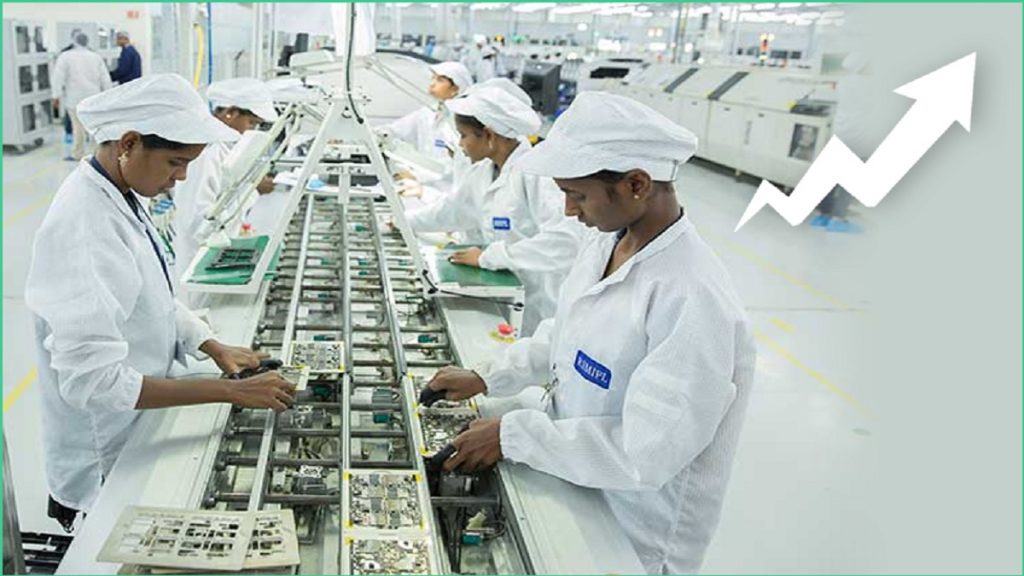New Delhi: The Covid-19 pandemic emanating from China caused it unimaginable harm and brought global disrepute besides making the global multi-national companies panicky about running sustainable businesses there. As a big bulk of these multi-national giants start looking beyond China for setting up new bases, India comes as the de-facto choice for all because it is the only market comparable to China in terms of population and enormous buying capacity.
India’s burgeoning population, seen as ‘liability’ could actually turn into an advantage. Despite lack of skills, India’s workforce remains its biggest asset and has potential to re-write the destiny of country, as the same has been quoted by Prime Minister also.
Today, a lot of foreign companies from Apple Inc to FoxConn to others, all have shifted their attention on India and are betting big on its huge market. Apple and its suppliers have set a target of building more than 50 million iPhones in India annually, within 2-3 years. Apple’s biggest supplier, Foxconn, is already expanding manufacturing business and setting up more plants across the country.
As a lot of western companies operating in China, plan to move out their businesses outside, couple of Asian nations like Vietnam, Thailand & India are seen as good prospects. Other two nations are also in the race but given India’s improved ranking in Ease of Doing business and cheap workforce, lot of western companies are making a beeline for setting up shops in India.
Many foreign manufacturers, from cars & smartphone makers, have chosen Indian markets to produce the products here, in collaboration with Indian counterparts.
Though, China still remains the towering figure in global production, India stands a good chance in emerging as alternate market, if not replacing its numero uno position.
Some of the gamechanger steps initiated by Modi government could be attributed for India’s renewed & vigorous growth on the world stage.
Make in India initiative
‘Make in India’ initiative, launched by Modi government in 2014, encourages domestic companies to assemble & develop products and also incentivizes investments into manufacturing businesses. The initiative created an environment for indigenous growth, however, economic transformation of the country is still a far-fetched goal.
However, its impact is visible. Between 2014-22, India has shipped 2 billion indigenously assemble smartphones & featured phone. In 2014, only 19% of phones shipped in the country were assembled but by 2022, this figure switched to 98%.
The vision behind Make In India was to infuse fresh impetus in growth, create employment and enhance exports. India, despite its untrained & unskilled manpower, is expected to adopt cutting-edge technology with time and subsequently emerge as key exporter of products.
Production-linked incentive scheme (PLI)
Production-Linked Incentive (PLI) Scheme was launched in 2020 with an aim to incentivize production & manufacturing in key sectors. The scheme covers 14 categories including smartphone manufacturing & semi-conductor making.
Smartphone sector has emerged as PLI’s biggest success story. Mobile phone exports have taken a sharp jump under the scheme. Last financial year saw India’s exports in the sector at Rs 90,000 crore and this is expected to exceed Rs 1.2 lakh crore in this fiscal.
The biggest gains were seen in electronics sector, where exports tripled since 2018 to $23 billion in the year.
“India went from making 9% of the world’s smartphone handsets in 2016 to a projected 19 per cent this year,” according to Counterpoint Technology Market Research.
Creation of skilled workforce
As the skilled workforce are a pre-requisite for transforming Indian into a thriving 21st century economy, a National Skill India Mission was launched in 2015.
The Mission was launched to created a dedicated workforce for every industry including the tertiary sector and lay the foundation for a modern, workforce intensive economy.
A couple of years down the line, this scheme will work wonders in creating and aligning workforce suited for respective factories and thus prove instrumental in powering country’s growth.

